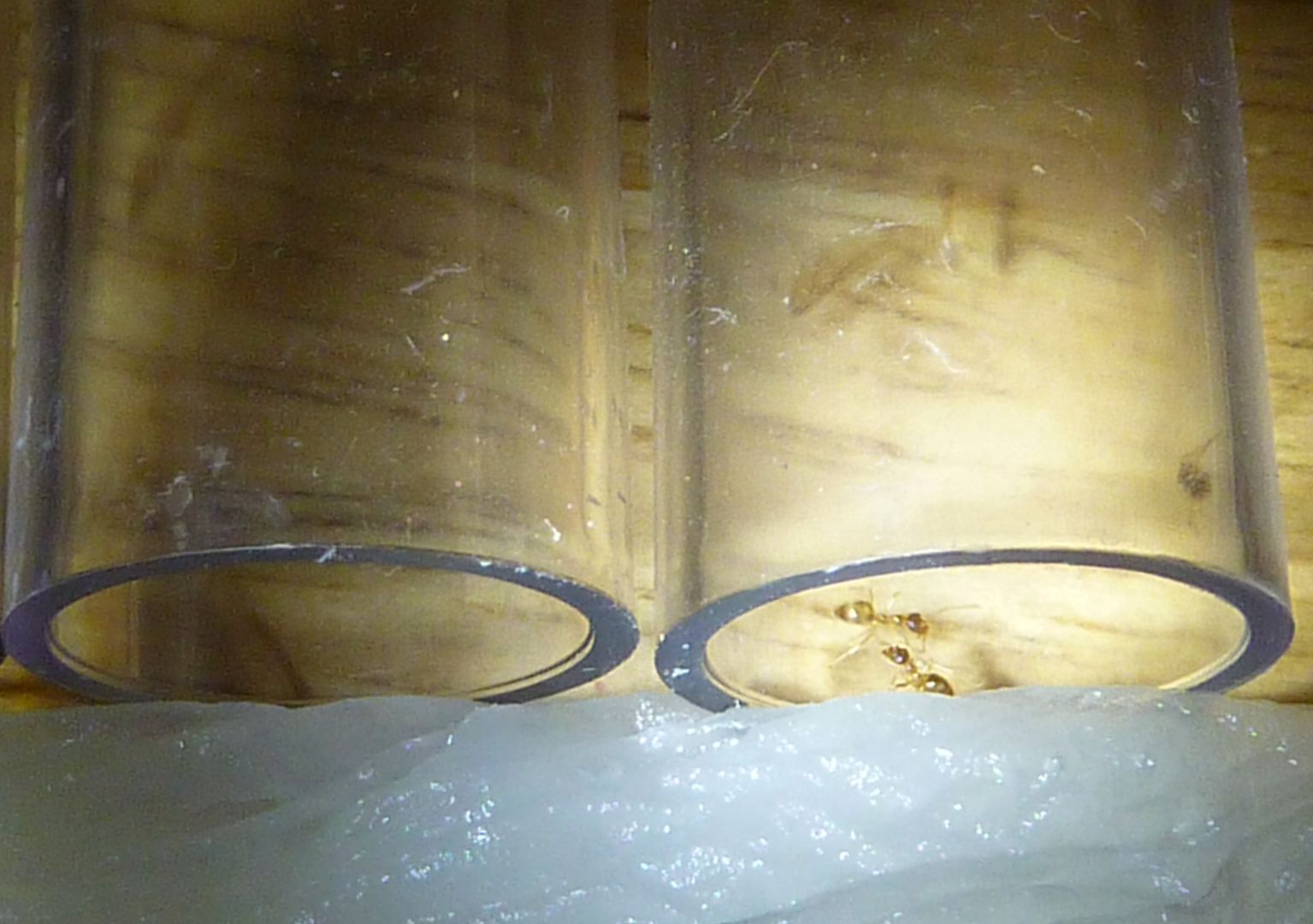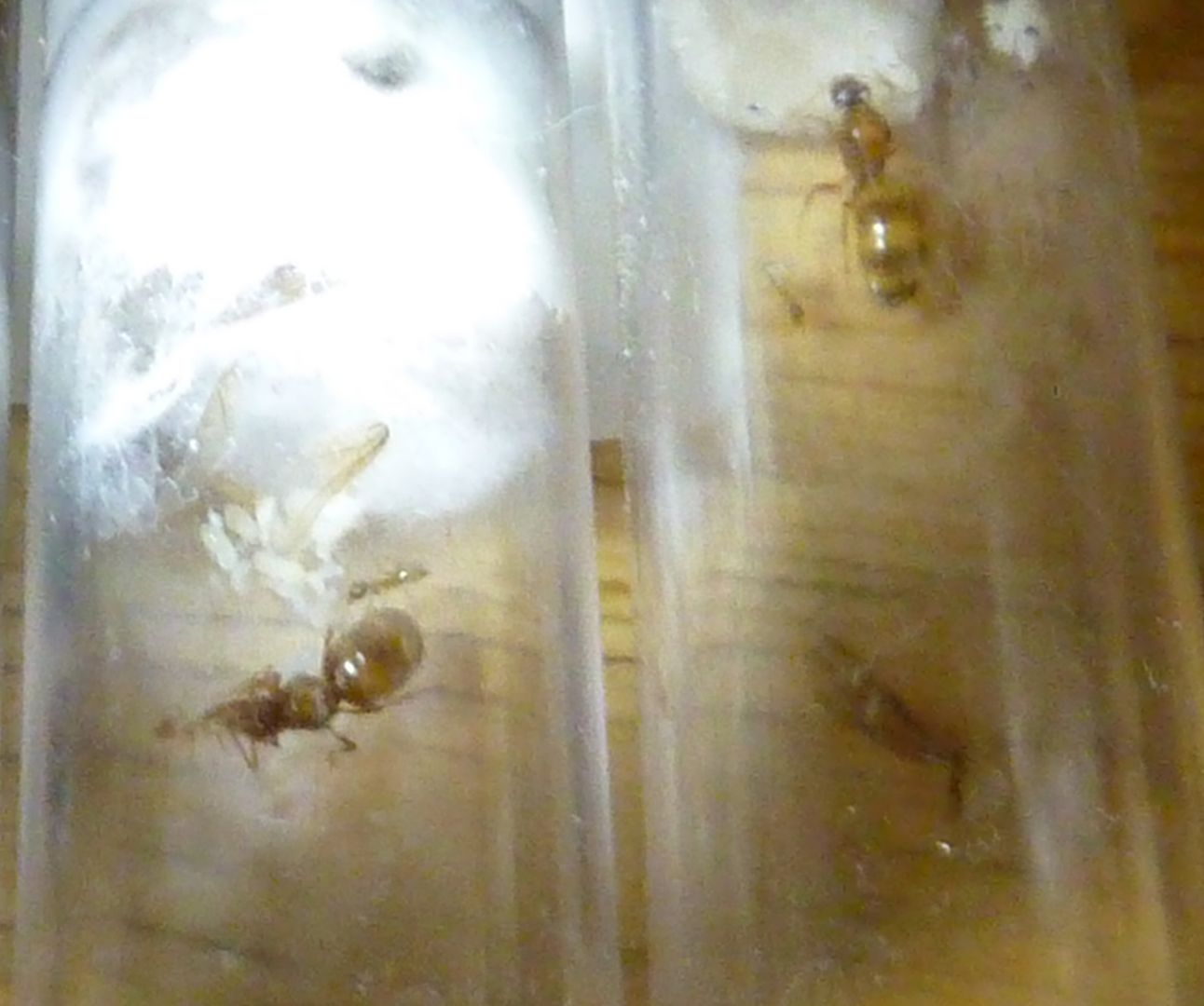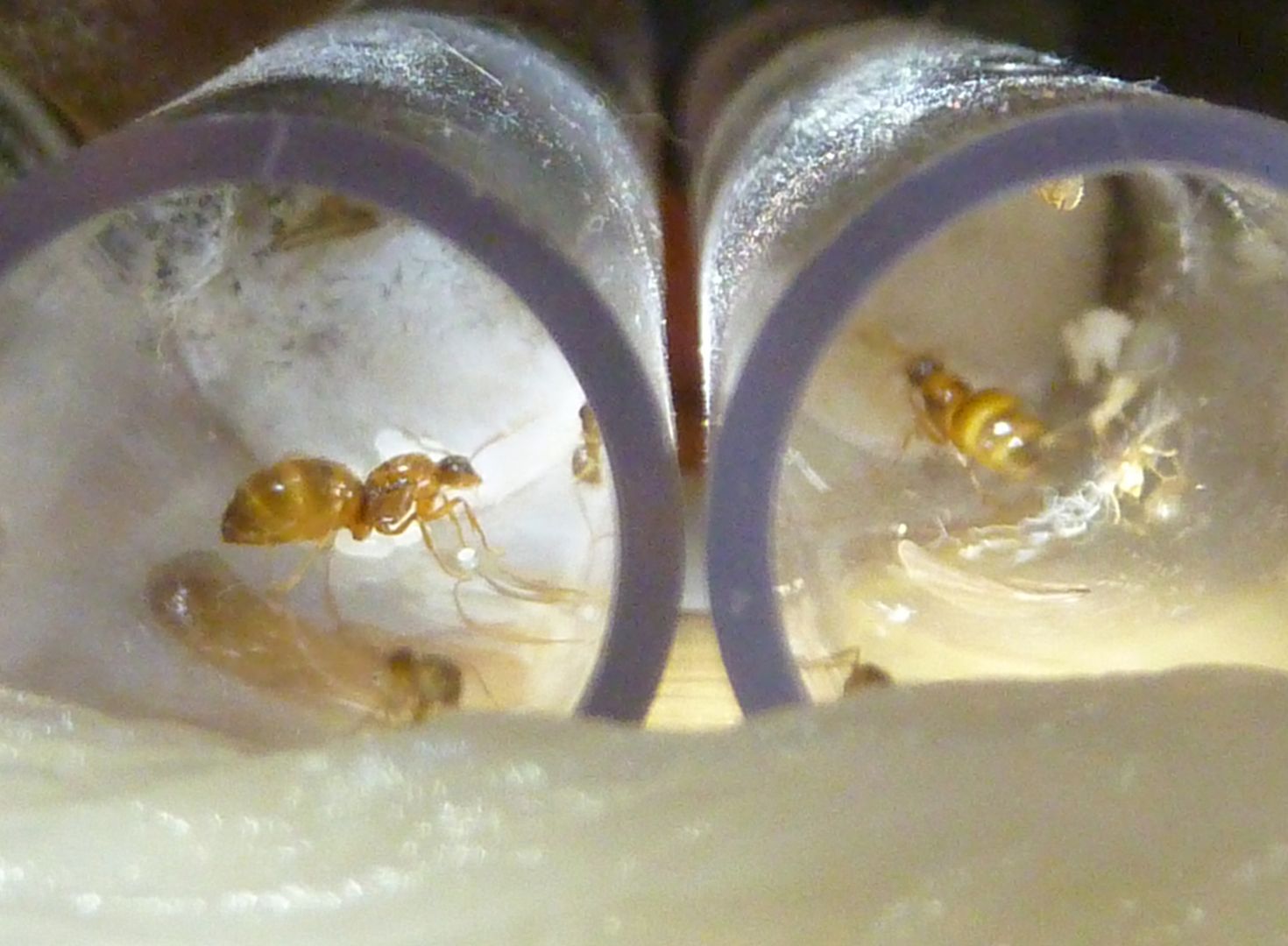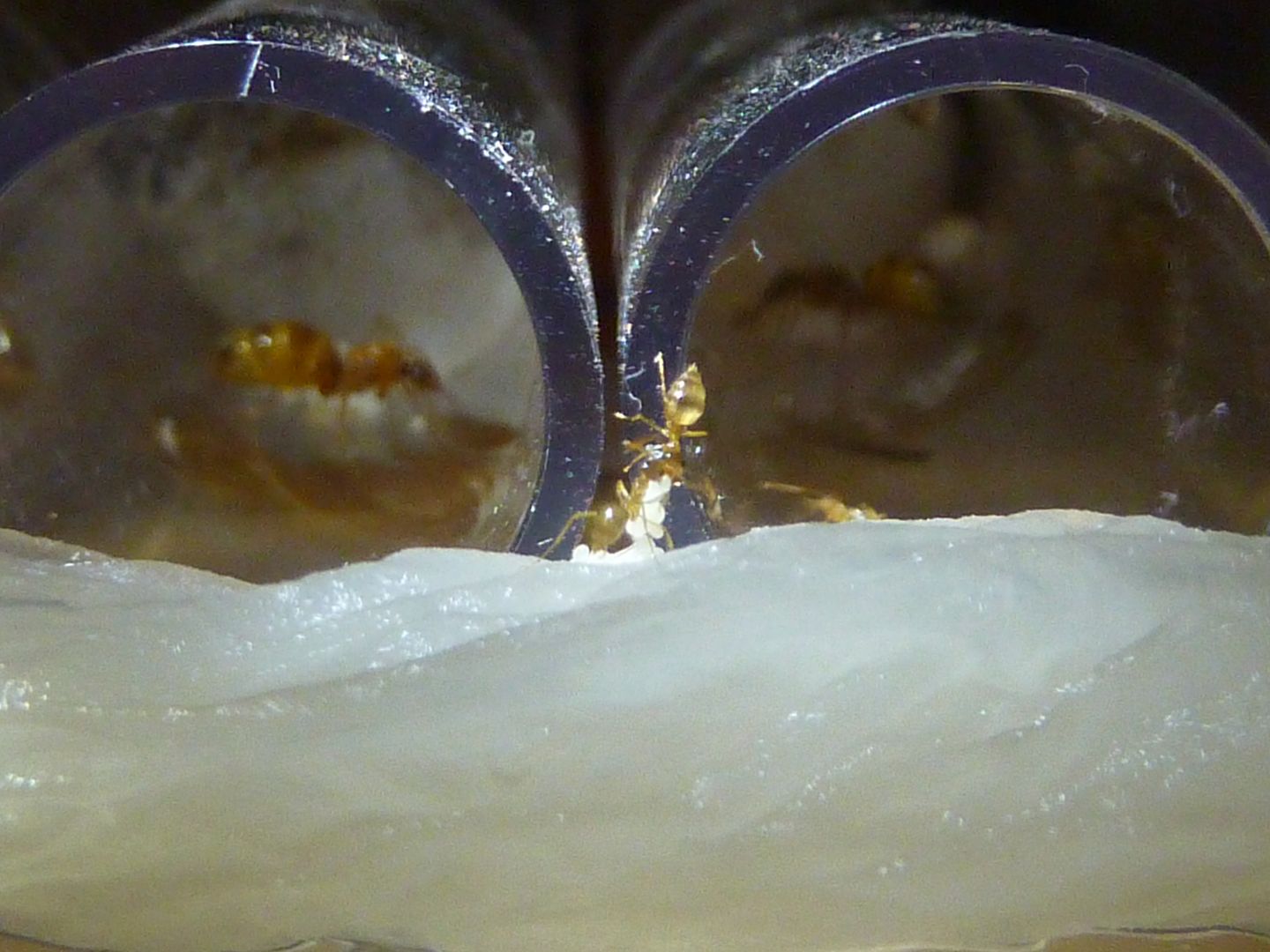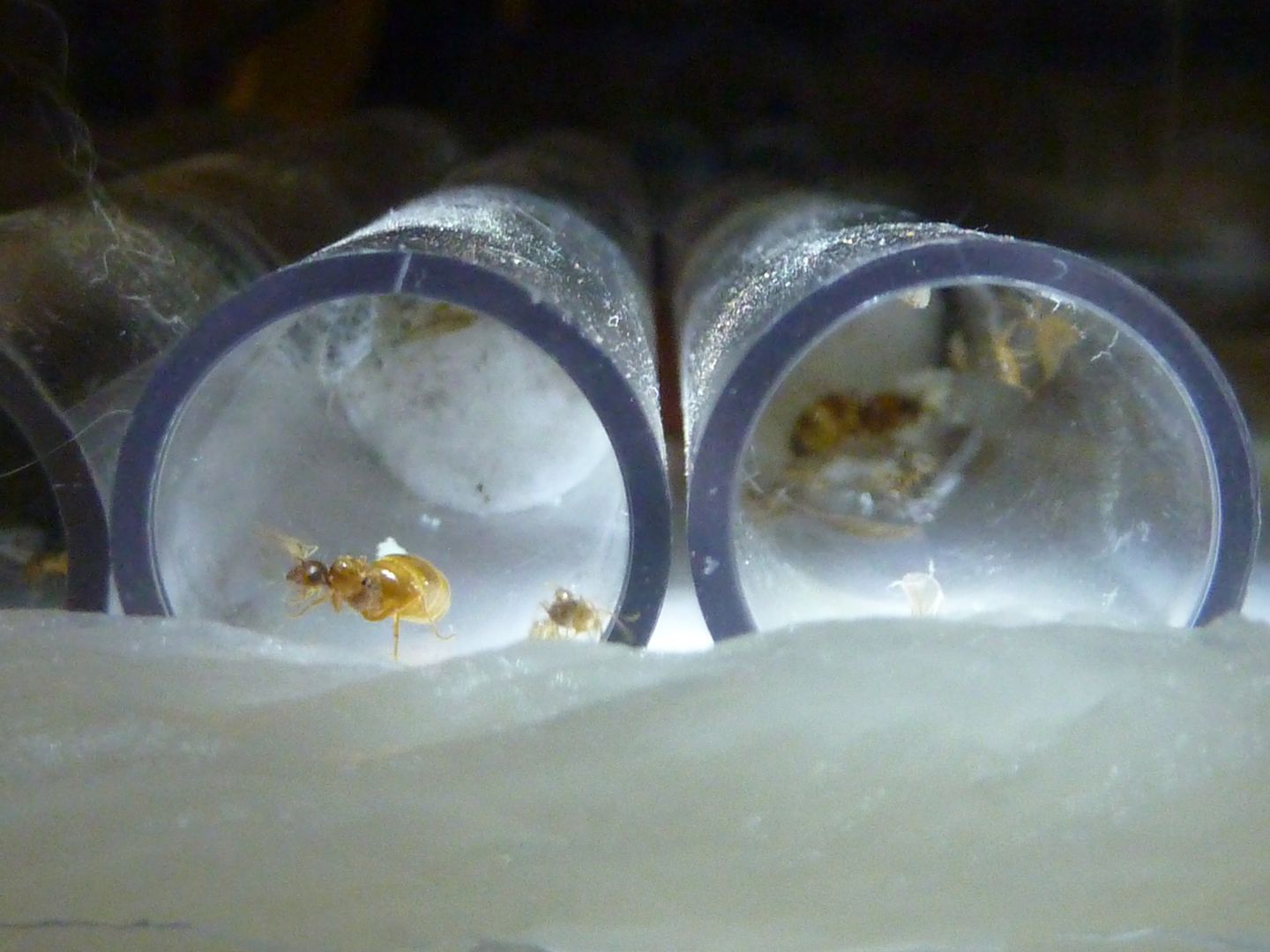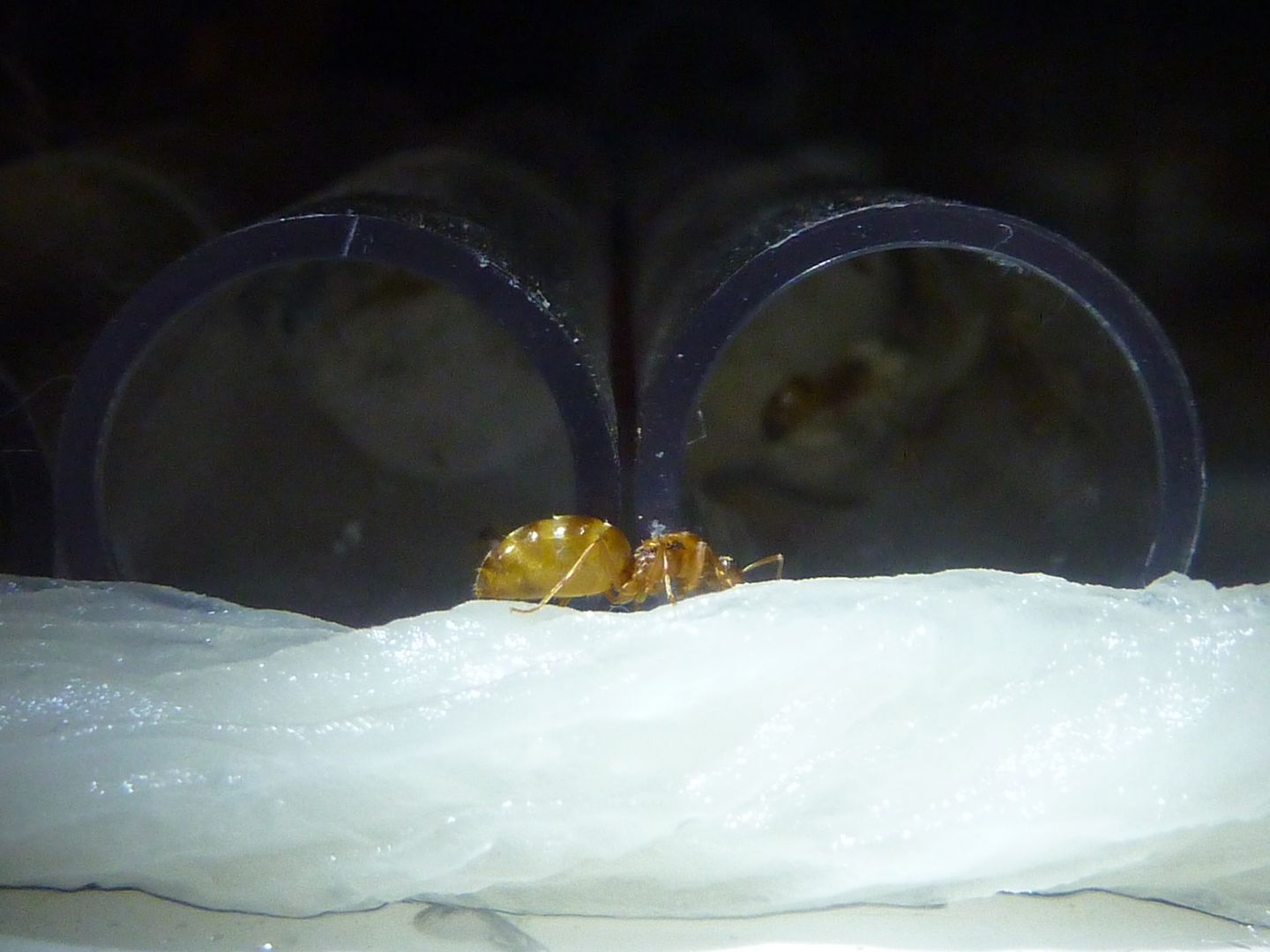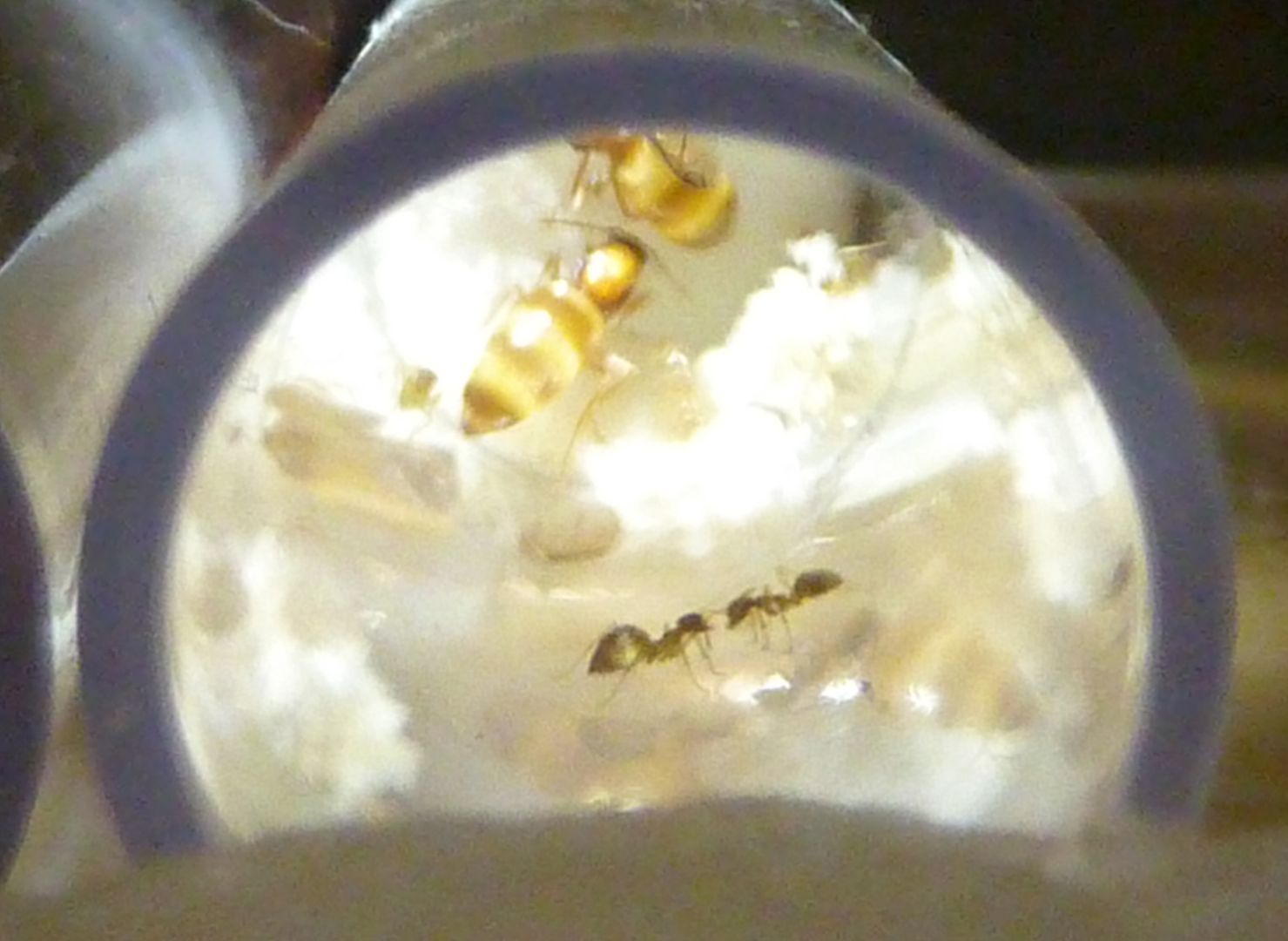This is an experiment that I did with my colonies of Prenolpis imparis I was able to rear this year. (See here, but be warned there's some suggestive language towards the end.) In North America there are 10 accepted varieties of this one species, and it's hard to believe some of them don't deserve species status. I'm not here to set the record straight though so that's just something to bare in mind should you try this with your own colonies of Prenolepis imparis.
In years past, locally, I have noticed Prenolepis imparis queens come in at least 2 sizes, and workers have at least 3 or 4 color patterns. I have tried this in years past with a slightly larger variety (the true species?) and it did not end well at all. On contact workers started fighting and killing one another, they stole the brood and out right murdered the queen to the weaker colony.
This is a bad reaction in captivity because it lowers the number of queens and colonies. Out in the wild though it's successful because it allows one colony to take over a nice patch of land where they don't need to fear much competition from their own species unless a larger colony already has claim to the territory.
Abstract
Nuptial flights usually result in queens scattering areas looking for potential nesting sites. Occasionally ideal sites are limited and more than one queen may start a nest there. When workers emerge these become delicate situations. Populations are low and every worker is important to a young colony. How species handle this situation is key to the colonies' survival. Here I decided to recreate what happens with this species, at least one variety, in captivity.
Experiment
Of 5 queens caught in March, only 4 successfully reared workers. (The last one died) Given how young the colonies are it is hard to say which variety I have, but given the options I'd say the closest variety they fit in with is the rare Prenolepis imparis var. minuta which is colored the same as the true species but overall smaller by about 2mm. I did not take this into consideration at the time of this experiment, if I had, I would have done this in two groups. Life is full of regrets.
Anyhow, considering I did this last year with poor results I decided that feeding them might help the colonies merge. Pictured above are 2 of 4 colonies (all four were laid out next to each other inside a container,) where the open ends touch a rolled up tissue sliver soaked in 1:1 sugar water. Workers quickly found the sugar water and began bringing it back to the nest. Exploring soon followed with interesting results.
It's hard to tell here but both workers are from different colonies. I didn't get good pictures of it but generally one worker would assume an aggressive stance, mandibles open and gaster turned ready to fire off some chemical. Rather than return the aggression, the threatened worker started feeding the other. The aggressor would lower their guard. The two workers eventually went their separate ways.
Here on the lower left a worker from the colony on the right has located the other's queen. The worker preformed the aggressive stance like before only to have the queen start feeding it to lower it's guard. After this is done the worker continues to wonder around freely in the other colony, eventually wondering back home.
This is either a series of muggings or from the other view, some kind of weaponized liposuction. I don't know how else to describe it. As with Honey Bees that swarm many of the individuals are to fat with honey to sting. Could the same be true for Prenolepis imparis repletes? Could making the other ant to fat to attack be the key to peace?
Workers between both colonies slowly become more and more indistinguishable as they roam freely between each colony. Mugging for food eventually stops all together. Of the two colonies that started doing this first, the one pictured on the right had more adult workers (those that had gained their full color).
Eventually the dominant colony, or at least the one with more adult workers, started transporting brood from the other colony to their own.
The queen to the colony on the left was curious where all her workers had gone and started roaming about. Upon finding brood scattered in her tube this left her wandering in confusion for a bit.
Eventually she got the idea and followed the thin trail of workers moving all her eggs into the other tube.
The two queens met one another without incident. The brood pile doubled in size thanks to the two colonies combining.
Over night this process was repeated with the other colonies in this setup and the result was one colony with four queens.
If I could do this experiment again I would repeat the same as above with 2 colonies. But with the other 2 I would try not feeding them at all. I'm curious to know weather or not exchanging food is important for a peaceful colony merging. What's more I'm curious to know if this is important with other P. imparis varieties as well other species. When the colonies are starving is it possible for two colonies to still find piece and not look at one another as food items?

